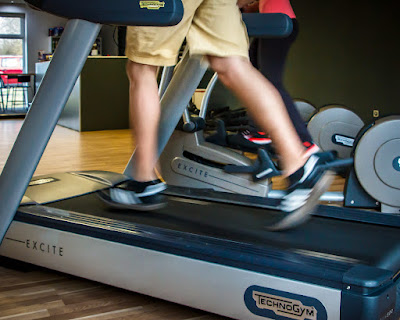Building a stronger leg muscle is important to achieving your fitness goals. When you have the strength to move your own body, it helps with exercise and mobility. Having stronger muscles will also help prevent injury and improve athletic performance.
Having strong leg muscles may seem like an impossible task for many people. However, there are some ways you can build your leg muscle strength that won’t break the bank or require years of dedicated effort. Here are some of the best ways to build strong leg muscles in just a few weeks.
Why building stronger leg muscles is important
As stated earlier, building stronger leg muscles is important to achieving your fitness goals. When you have the strength to move your own body, it helps with exercise and mobility. Building stronger leg muscles also helps prevent injury and improve athletic performance. Plus, when you have strong leg muscles, you don’t have to worry as much about losing muscle mass due to age or illness.
Having strong leg muscles may seem like an impossible task for many people. However, there are some ways you can build your leg muscle strength that won’t break the bank or require years of dedicated effort. Here are some of the best ways to build strong leg muscles in just a few weeks:
Step 1 – Resistance Training
The first way to build stronger leg muscles is resistance training. This can be done by doing squats, lunges, push-ups, and ab exercises that use free weights or gym equipment such as a bench press. In order to maximize the benefits of resistance training, do it at least two times per week for 10-30 minutes each session (more if possible).
Step 2 – The Leg Press Machine
The second way to build stronger leg muscles is using a machine called the "leg press." This machine will help you work out your quads and glutes without having to put in too much effort yourself. A benefit of this machine is that it will strengthen both your front and back legs simultaneously because they are working on opposite sides of the foot plate while sitting on
How to build your leg muscle strength
You can start your leg-muscle training with some basic exercises. You can do these exercises at home or in the gym. One of the easiest, and most effective, exercises is weight-bearing squats. You can also include lunges, step-ups, and deadlifts.
These are all great ways to build your leg muscle strength. However, you don’t have to stop there. If you want to see an even bigger result, you should add a few more key moves into your routine:
1) Lunges - Do lunges with a dumbbell in each hand for increased balance and stability as well as muscle tension in the legs
2) Bulgarian Split Squat/Dumbbell Romanian Deadlift - These two variations on a squat will help you gain strength on both hamstrings and glutes and will give you better balance
3) Glute Bridges - This move works out your glutes while strengthening the hamstrings
4) Lateral Lunge - This exercise will help strengthen the lateral thigh muscles
Build leg muscle strength through workouts
The best way to build leg muscle strength is through workouts. Building leg muscle strength is all about using your muscles over and over again, which will make them stronger. You can start with some basic squats and deadlifts. These exercises are great for building the foundation of your leg muscles when it comes to strength.
Additionally, you can use weightlifting equipment like dumbbells and barbells in order to build more muscle through a different workout that doesn’t involve squats or deadlifts. This type of workout will also target your lower body differently than squats and deadlifts would.
Build leg muscle strength through cardio
Cardio is a great way to build leg muscle strength. If you go on a cardio workout, you will be doing intense exercises that will strengthen your muscles. The more intense the exercise, the better it is for building muscle strength.
One of the best ways to get started with cardio is to do interval training. Interval training involves short bursts of high-intensity exercise with at least five minutes of rest in between each burst. For example, if you want to start with cardio for building leg strength, try doing sprints on a running track or playing basketball for 20 minutes straight without stopping.
Many people also use weights when they are doing their cardio workouts as resistance training. Heavy weights are necessary for building leg muscle strength and endurance since weight training also builds up your leg muscles.
When doing any type of cardio or weight training, make sure you warm up properly before moving into your exercises so that your body can adapt properly and move smoothly during the exercises themselves.
Eat right and drink enough water
Eating a proper diet is one of the best ways to build leg muscle strength. The right foods will help you get a range of nutrients your body needs to build muscle, but eating too much won’t make up for poor nutrition. For example, high protein diets can be so dense in calories that they run the risk of causing weight gain and health problems.
In order to avoid these complications, it’s important to eat a well-rounded diet that includes good fats and carbohydrates as well as proteins. Remember to drink enough water throughout the day because dehydration can weaken your muscles.
Protein – Your Fuel for Growth
Protein is necessary for muscle growth and development, so it’s a good idea to make sure your daily diet includes protein. Protein can be found in many foods like eggs, chicken, fish, oatmeal and tofu. You can also supplement your diet with protein powders or protein shakes.
Vegetables – The Powerhouse of the Diet Pyramid.
Vegetables are an important part of a balanced diet. They offer fiber, antioxidants and vitamins that can help you achieve your fitness goals.
Fiber in vegetables provides bulk to your diet and aids in digestion. That means you’ll be less likely to feel constipated and experience digestive issues later on. Vegetables also contain antioxidants that can help provide inflammation relief while promoting a healthy immune system. Additionally, vitamins in vegetables aid in preventing chronic diseases such as heart disease, cancer, diabetes and obesity.
The best way to consume vegetables is whole foods- meaning the vegetable will be consumed as its natural form with no additives or added substances. This will only add more nutrients when you consume vegetables whole food instead of cooking them for hours or adding additional ingredients like salt or oil.




0 Comments